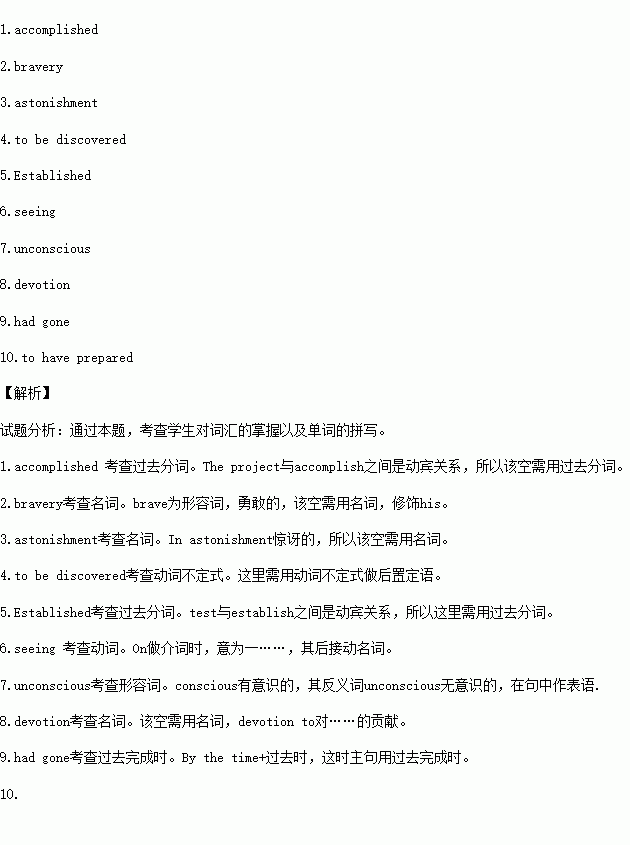题目内容
根据所学语法用正确形式填空
1.The project,_____________( accomplish) by the end of 2010, has expanded the city’s telephone network to cover 1,000,000 users.
2.He received a medal in reward for his____________ (brave)
3.“Didn’t you have a good time at the party?” she looked at me and asked in ___________. ( astonish )
4.Antarctica was the last continent ___________. ( discover)
5.___________ (establish) in 1990, the HSK test was initially meant for those learners who regard Chinese as a second or foreign language.
6.On ____________ (see) her mother , she burst into tears.
7.After more than ten days of searching,the missing lady was found at last, ____________(没有意识). ( conscious ).
8.Everybody sang high praise for her __________(devote) to the cause of education.
9.By the time I got to the station , the train ___________(go).
10.The little girl showed no anxiety before the competition. She seemed ______( prepare) for it pretty well.



